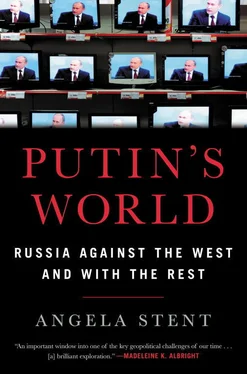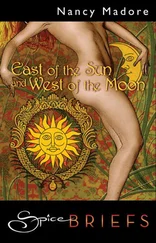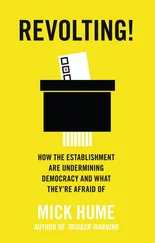Meanwhile, the Kremlin has abandoned the idea of creating a Novorossiya as it was in Catherine’s time. Instead, in July 2017 the separatists proclaimed a new state of “Malorossiya” (Little Russia), which would encompass most of Ukraine. Russian officials disavowed this move, highlighting the opaque nature of Moscow’s control over the separatists. Some Ukrainians and their supporters in North America have begun to question whether it really is in Kyiv’s interest to try to regain control over the impoverished, battle-scarred, unruly Donbas. Since the beginning of the conflict, so this argument goes, Kyiv is “no longer obliged to sustain a rust belt that once drained its coffers, endure the region’s corrupt oligarchs, political elites, and criminal gangs, or appease its pro-Soviet and pro-Russian population.” 57
Russia has suffered economically from its invasion of Ukraine. After the annexation of Crimea, the United States imposed sanctions on individuals close to Putin. But the more serious financial sanctions came after the MH-17 crash. The new sanctions, imposed by the US and Europe, sharply restricted access for Russian state banks to Western capital markets, a major source of foreign lending. Under the sanctions, EU and US firms were barred from providing financing for more than thirty days to the country’s key state-owned banks. This has severely limited the banks’ ability to finance major projects. Russia’s energy sector was also targeted. Sanctions prohibited access to certain energy technologies and participation in deep-water Arctic oil shale development, ending Rosneft’s collaboration in the Arctic with ExxonMobil. In retaliation, Russia imposed counter-sanctions on European agricultural imports, and the Kremlin used this to encourage domestic production of high-end agricultural products. Indeed, at the 2017 Saint Petersburg International Economic Forum, in what became known as the “cheese ambush,” a Russian farmer accosted the US ambassador John Tefft and proudly handed him a large cheese wheel, explaining that he had been able to produce it because of the ban on competing cheeses from Europe. The ambassador, though taken by surprise, was a consummate diplomat and explained that he was from the cheese-producing state of Wisconsin and graciously accepted the gift.
CAN THE UKRAINE CRISIS BE SOLVED?
At the 2014 G-20 summit in Brisbane, Australia, Putin endured hours of criticism from Western leaders about Ukraine and left the summit early. Yet it was, of course, impossible to isolate him, given Russia’s relationship with China and other countries. And his calculation—proven correct—was that he could ride out this initial wave of ostracism, knowing full well that in the end the West would have to deal with him. The Russian leader has patience. The West would have to seek him out again, particularly after Russia launched its air strikes in Syria in September 2015. The 2017 Hamburg G-20 meeting proved him right. He was center stage, sought out by most leaders, held a two-and-a-half-hour meeting with President Trump, and attended many other bilateral meetings.
The Ukraine war has been particularly challenging for the West because Russia repeatedly denies that it is directly involved. Ukraine is a new type of “hybrid” war, combining cyber warfare, a powerful disinformation campaign, and the use of highly trained special forces and local proxy forces. The Russians sought to mask the reality of what was happening by having “little green men” invade Crimea and the Donbas, claiming that the Russian soldiers who were observed fighting in the Donbas were “on vacation,” asserting that trucks going to and from Ukraine were carrying “humanitarian supplies” instead of weapons and men, accusing Ukraine of shooting down MH-17, and burying dead Russian soldiers in unmarked graves without informing their families. 58Ukraine and the West understand that Russia is dissembling and that there have been as many as tens of thousands of Russian troops in the Donbas, but the constant barrage of state-run Russian television news tells another story, not only to Russia’s own population but to those around the world. In Oliver Stone’s four-hour television interview with Putin, for instance, the narrative is Putin’s. The audience is told that the separatists are fighting alone, mobilized by the “coup d’état” in Kyiv, and Putin questions whether MH-17 was indeed shot down.
In May 2018, the Australian and Dutch governments published a report detailing the results of their years-long investigations into the MH-17 downing. Its conclusion was unambiguous: “The Netherlands and Australia hold Russia responsible for its part in the downing of flight MH-17.” 59A Dutch police official went further. The investigative team, he said, “has come to the conclusion that the Buk TELAR by which MH-17 was downed originated from the 53rd Anti-Aircraft Missile Brigade from Kursk, in the Russian Federation. All of the vehicles in the convoy carrying the missile were part of the Russian armed forces.” 60The report did not specify who fired the missile, but several media outlets named a high-level Russian GRU officer tied to the downing. 61Russia continues to deny that it had anything to do with the crash. 62When Putin was asked at the Saint Petersburg International Economic Forum about whether a Russian missile had downed the plane, he replied, “Of course not!” 63
There are few signs that Russia is interested in resolving the Ukraine crisis. Continuing conflict makes it difficult for the Poroshenko government to function, and the Kremlin wants a weak, divided Ukraine. Russia and the West have discussed the possibility of deploying UN Peacekeeping troops to the Donbas, but there is no agreement on where these troops should be stationed or what their remit would be. Western sanctions are tied to Minsk II implementation, but although Putin would like sanctions lifted, he apparently is not willing to moderate Russian policy toward Ukraine. Former secretary of state Rex Tillerson suggested that the US administration should not be “handcuffed” if Russia and Ukraine can work out their differences bilaterally outside the Minsk II structures. 64But prospects for such a deal also appear remote. Putin has indicated that Russia might withdraw to its side of the border if both the Donetsk and the Luhansk People’s Republics are granted wide-ranging autonomy, including leverage over foreign policy decisions made in Kyiv. But Poroshenko does not have the votes in the Rada to pass such legislation, even if he wanted to. Thus Moscow blames Kyiv for failing to implement Minsk II, and Kyiv blames Moscow. Meanwhile, all sides realize that the Crimean issue will not be resolved for a very long time.
Russia has also indicated that a precondition for Ukraine regaining sovereignty over its territory would be a pledge not to seek NATO membership and revert to the “non-bloc” status it had until Yushchenko came to power. However, Poroshenko in July 2017 committed Ukraine to seeking NATO membership by 2020. It is not at all clear that NATO wants Ukraine. The idea that Ukraine should “Finlandize”—that is, accept a status similar to that of neutral Finland during the Cold War—has been advocated by two US statesmen who often did not agree with each other: the realist Henry Kissinger and the more ideological Zbigniew Brzezinski. 65Viktor Pinchuk, prominent Ukrainian oligarch and son-in-law of Leonid Kuchma, has also argued that Ukraine must give up its aspirations to join the EU and NATO if it wants the war to end. 66In fact, neither EU nor NATO membership is on offer for Ukraine, nor will they be for the foreseeable future. But the specter of the United States, Russia, NATO, and the EU agreeing to keep Ukraine neutral is disconcerting. It resurrects the ghosts of Yalta and the division of Europe into great power spheres of influence, with limited sovereignty for the countries that lie in the EU’s and Russia’s common neighborhood. It would signal that the post–Cold War international order, which Russia seeks to undermine, is indeed over. There is also no guarantee that such an agreement would curb Russia’s appetite for increasing its influence in the post-Soviet space and continuing to undermine Ukraine’s ability to function as an independent state.
Читать дальше












